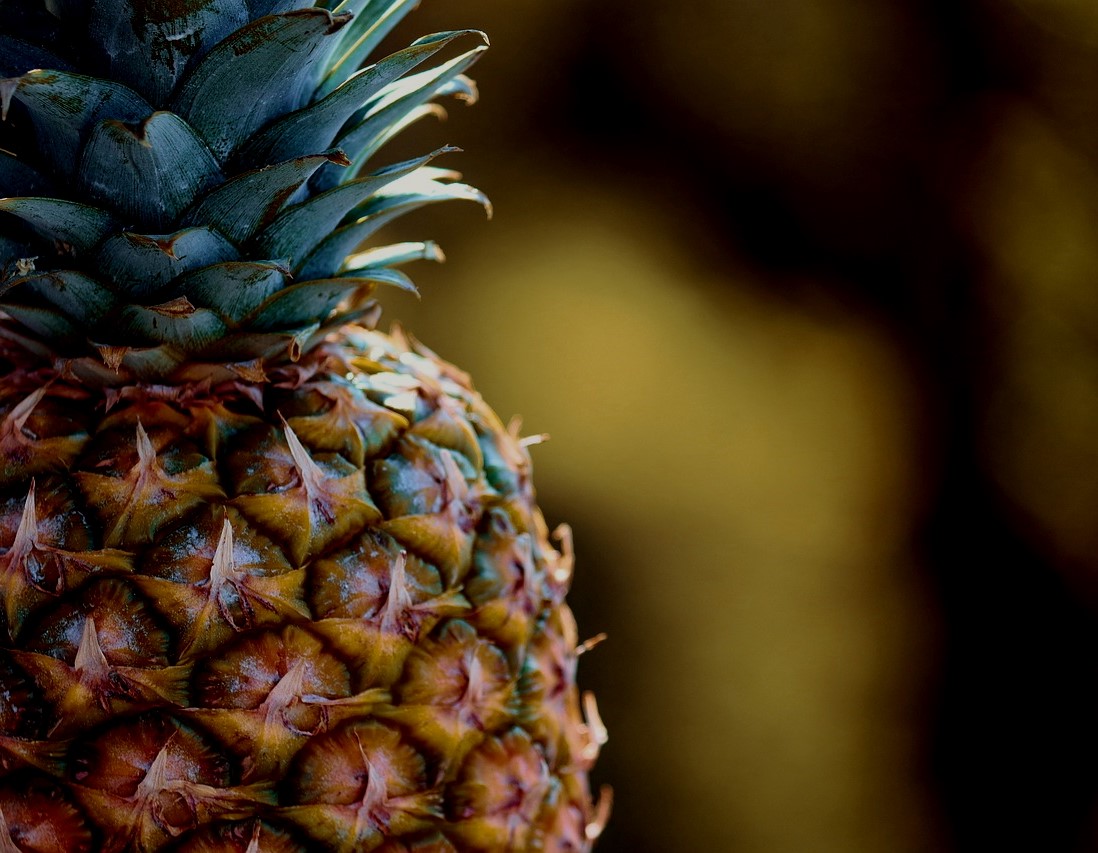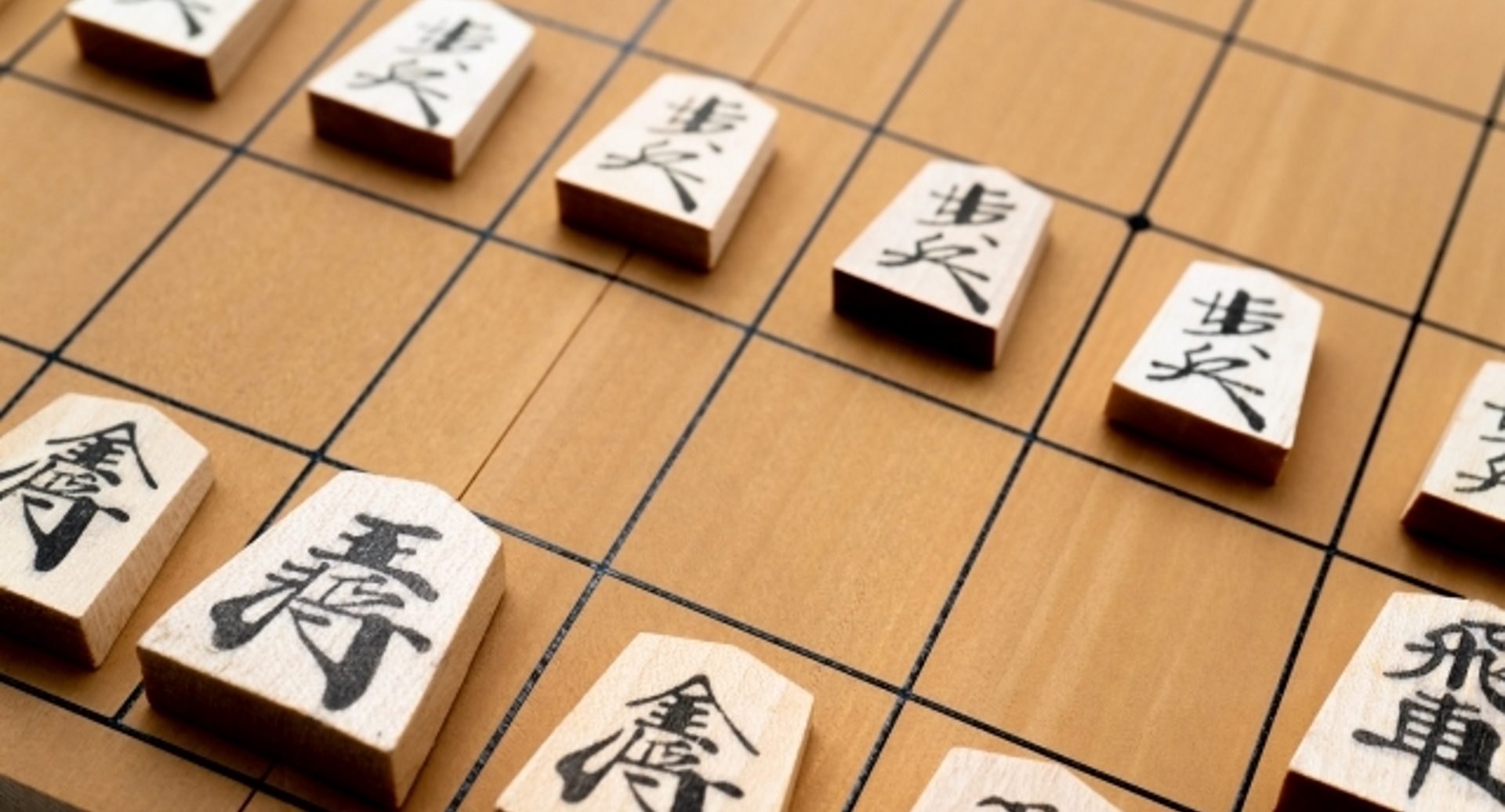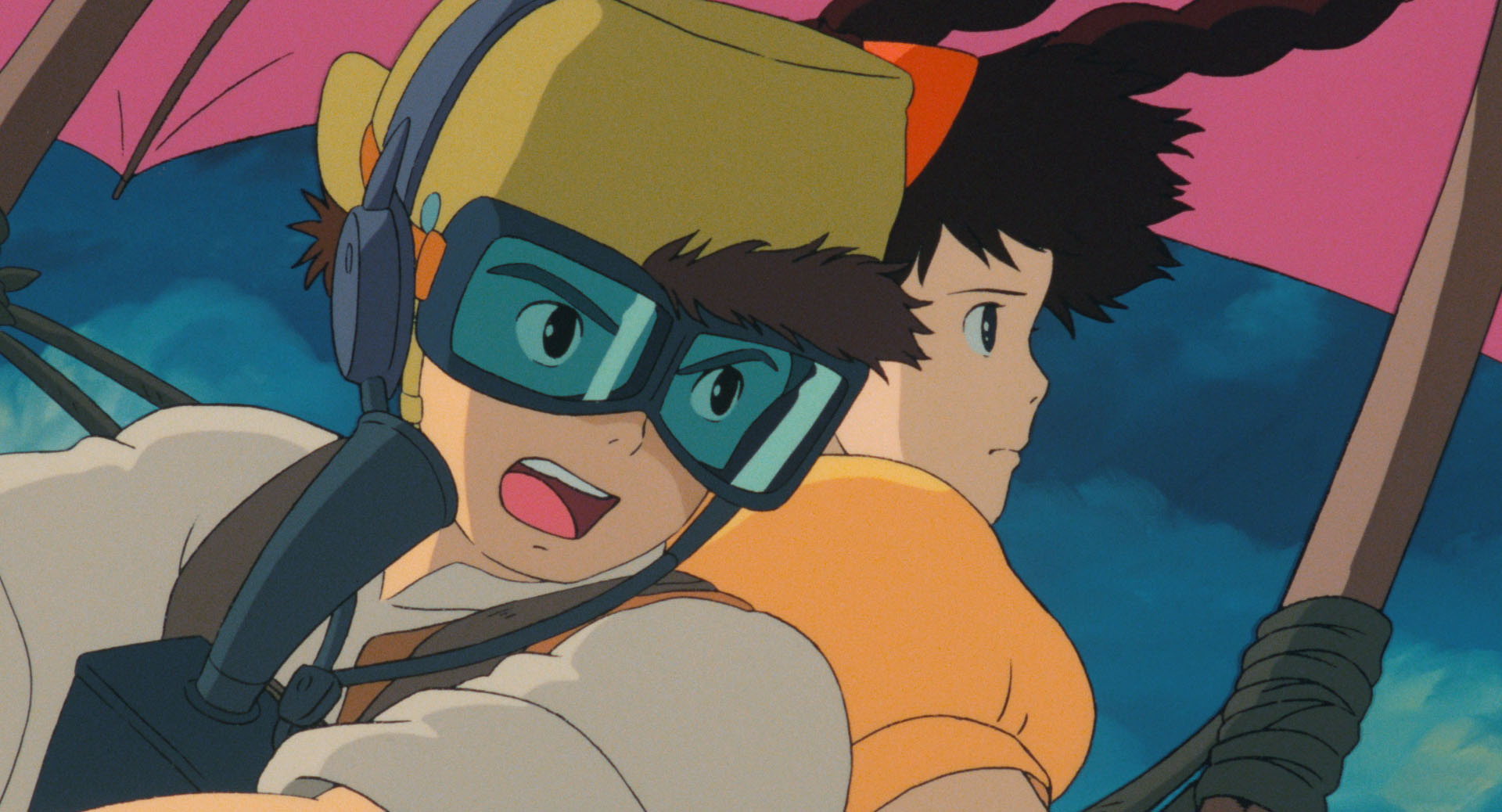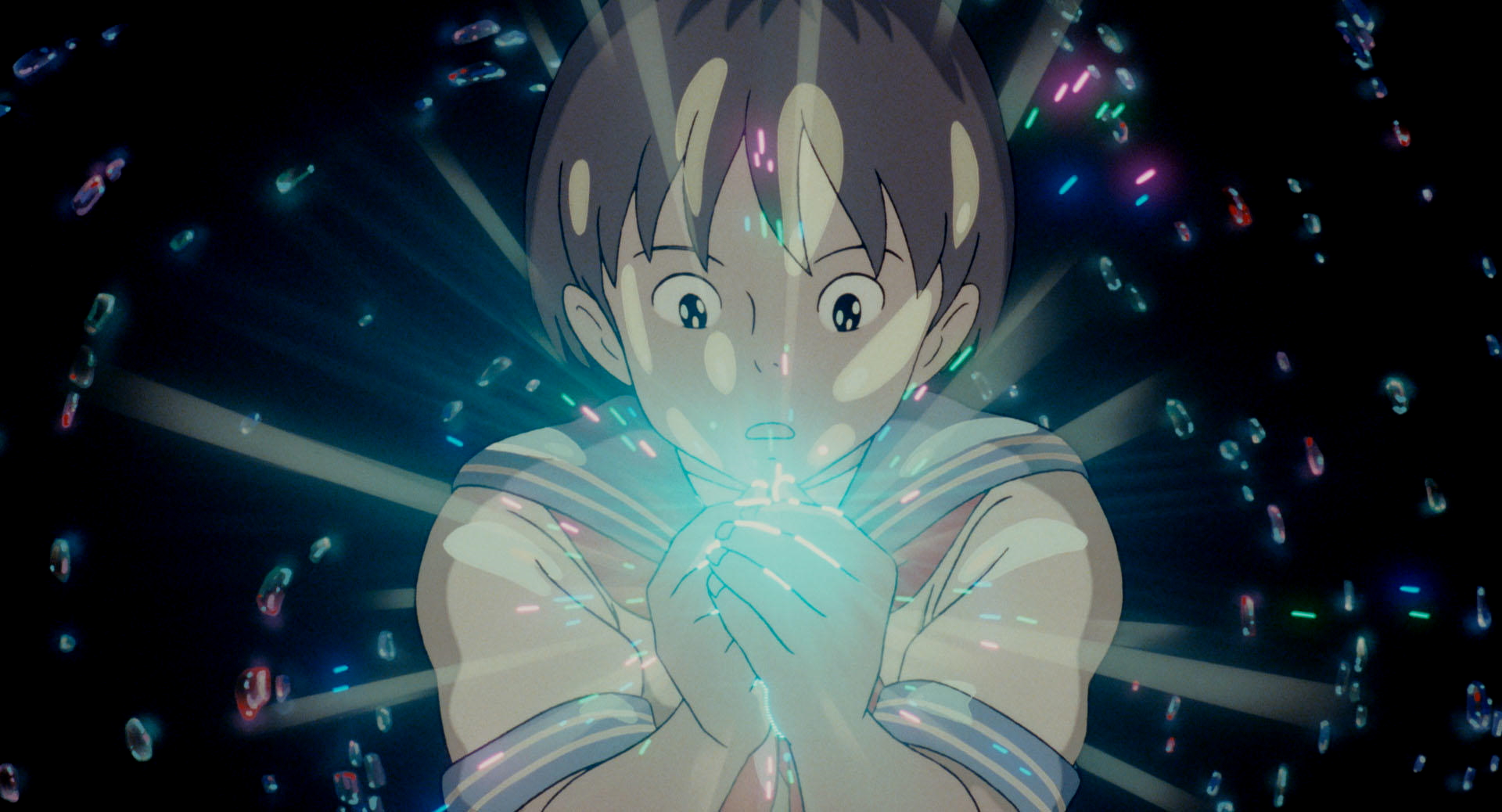An Attempt to Organize
Thinking Patterns Using
"Kobo-chan" as an Example
(2) Analogy
Contents
◆ The analogy between the four terms
Following An Attempt to Organize Thinking Patterns Using Kobo-chan as an Example (1) Metaphor, I will explain ‘analogy’ using Kobo-chan as an example.
For example, in A, the analogy is drawn very clearly.
A
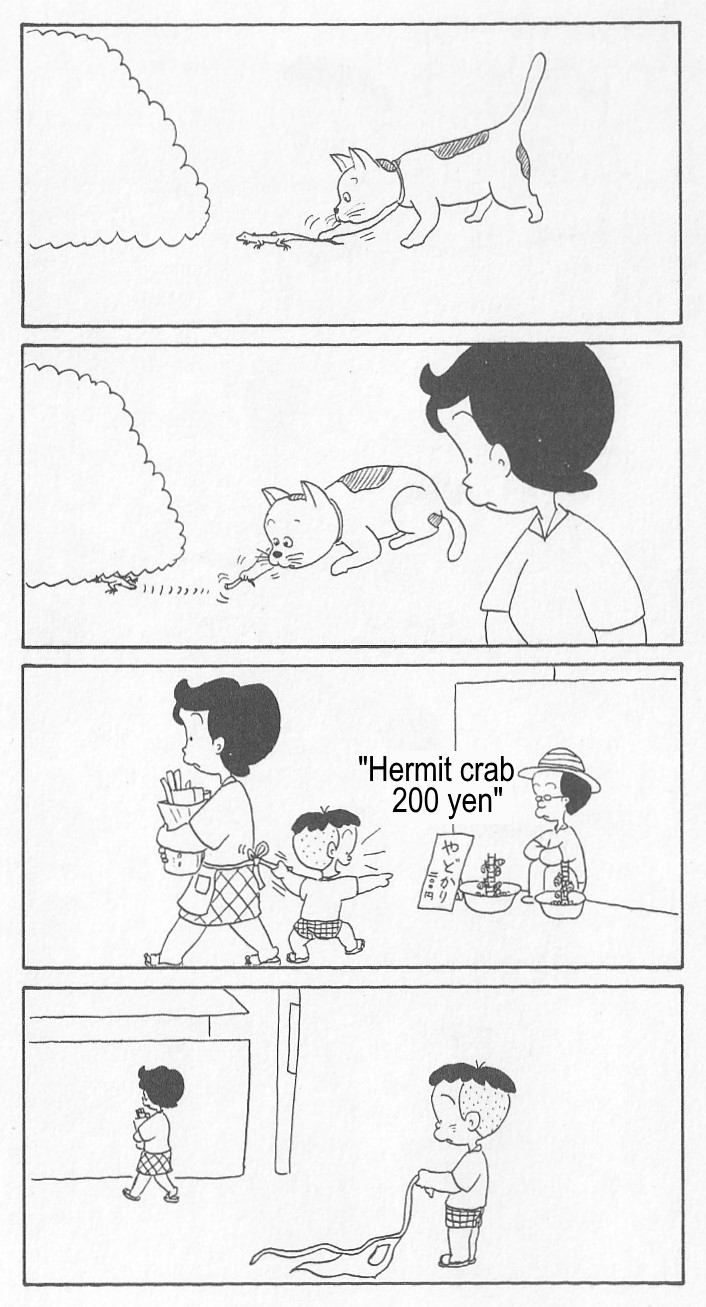
From Kobo-chan Masashi Ueda/Sōyō-sya
©UEDA Masashi
Sanae, Kobo-chan’s mother, watches as the lizard, its tail held by the cat, detaches itself and runs away from the cat. Later, accompanying her, Kobo-chan saw some hermit crabs for sale at a street vendor and asked Sanae to buy them. At that moment, Kobo-chan pulls the string of Sanae’s apron, which causes the knot to unravel. Only the apron remains in Kobo-chan’s hand, and Sanae walks away.
An analogy is, to be precise, an analogy of a “relationship.”
In A, the relationship between a cat and a lizard is similar to Kobo-chan and Sanae. Like a lizard whose tail is held by a cat, Sanae, who is grabbed the apron’s string by Kobo-chan, “sacrifices” her apron to escape Kobo-chan’s begging. Only the lizard’s tail remains on the cat’s paw, and only the mother’s apron remains on Kobo-chan’s hand.
If I express this analogy in the form of an equation:
Cat : Lizard ≒ Kobo-chan : Sanae
In both the left and right sides of the equation, the left term is the “catching side,” and the right term is the “escaping side.”
If Sanae had not seen the lizard cut off its tail and run away, this would simply be an analogy made by the author and understood by the reader as an analogy. But Sanae sees it. Then Sanae can be said to be referring to the strategy of the lizard. In this case, Sanae is making an analogy as a thought.
We can say that the following B is another example of analogy.
B
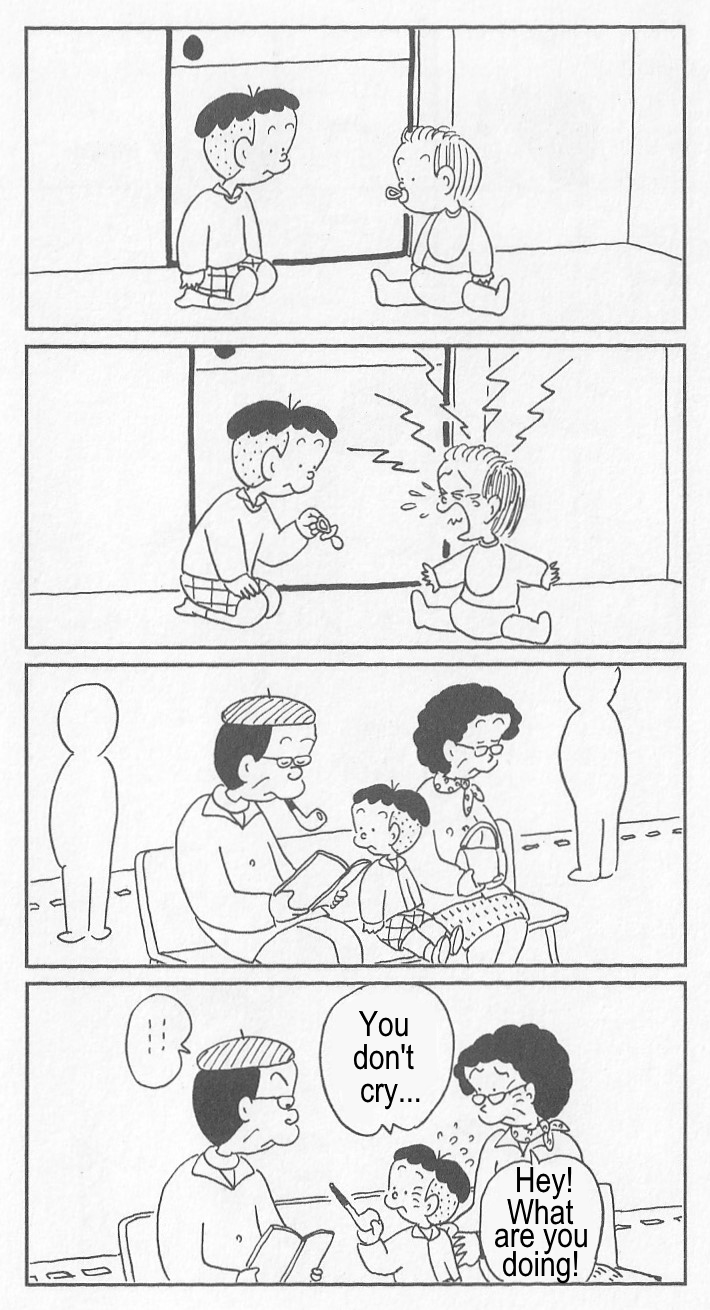
From Kobo-chan Masashi Ueda/Sōyō-sya
©UEDA Masashi
Kobo-chan tries to take the pacifier that the baby is holding in mouth. Then the baby would cry. At this point, we can say that Kobo-chan learned about the relationship between babies and pacifiers. Later, while sitting on a bench at the station, Kobo-chan notices that the man next to him is holding a pipe in his mouth. Kobo-chan, who had already learned about the relationship between babies and pacifiers, speculated that what he had learned might also apply to the relationship between men and pipes. In this case, Kobo-chan is making an analogy as a thought. And then he would check to see if his guess was correct. The result is that this episode depicts that it was wrong.
Let me clarify the difference between metaphor and analogy here.
The metaphor was to focus on the commonality of ‘predicates’ as explained in An Attempt to Organize Thinking Patterns Using Kobo-chan as an Example (1) Metaphor. Seeing something ‘round’ makes you associate it with something else ‘round,’ and seeing something ‘wrinkled’ makes you associate it with something else ‘wrinkled.’ The process of “the predicate of A and B are the same, so A is B” occurs in our mind; this is the metaphor. There are only two “things” in this process.
On the other hand, the analogy is basically the process of thinking that “the relationship between A and B is like the relationship between C and D.” In this case, there are four “things,” or “terms,” A, B, C, and D. For this reason, we can call this “the analogy between the four terms.”
◆ Primitive Analogy
Gregory Bateson saw analogy, like metaphor, as a primitive form of thinking. For example, in Angels Fear, he reports observing it in communication between wolves.
I went to see the nice little pack of wolves in Chicago at the Brookfield Zoo, ten of them lying asleep all day and the eleventh one, the dominant male, busily running around keeping track of things. Now what wolves do is to go out hunting and then come home and regurgitate their food to share with the puppies who weren’t along on the hunt. And the puppies can signal the adults to regurgitate. But eventually the adult wolves wean the babies from the regurgitated food by pressing down with their jaws on the backs of the babies’ necks. In the domestic dog, females eventually wean their young from milk in the same way.
In Chicago they told me that the previous year one of the junior males had succeeded in mounting a female. Up rushed the lead male-the alpha animal-but instead of mayhem all that happened was that the leader pressed the head of the junior male down to the ground in the same way, once, twice, four times, and then walked off. The communication that occurred was metaphoric: “You puppy, you.”
From Angels Fear by Gregory Bateson&Mary Catherine Bateson
In this example, there is an analogy between the parent-child relationship in wolves and the relationship between the boss and the young male wolf. The young wolf would have understood the boss’s message if he had been bitten in the neck and pushed to the ground by his parents during a “wean regurgitate” when he was a child. At this point, the boss tells the young wolf, “The relationship between you and me is like that between a parent and a child. Don’t get carried away,” without using words. In other words, we can say that animals also use analogies. The analogy is a primitive form of thinking.
The Father dog is angry at the son dog for trying to take the mother dog’s food. The father is holding the son down with his paws.
A dachshund pesters a toy poodle, and the big dog is angry with it. The big dog is holding the dachshund down with its paws. If their parents were also angry with them as puppies, their relationship is likened to that of a parent and child.
◆ The analogy between the three terms
The next one, C, can also be called an analogy, but it should be slightly different from A and B.
C
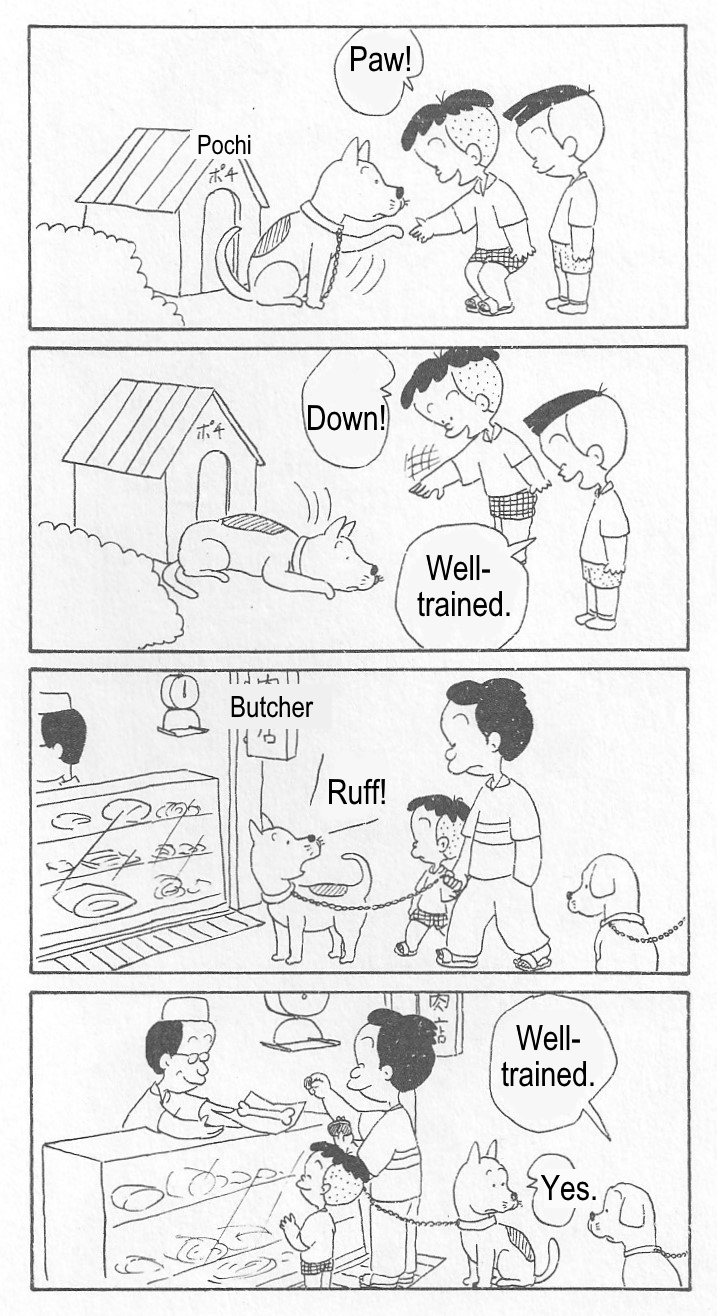
From Kobo-chan Masashi Ueda/Sōyō-sya
©UEDA Masashi
Pochi, the dog, is being trained by Kobo-chan to do tricks like ‘paw’ and ‘down.’ Kobo-chan’s friend, who was watching, said, “Well-trained.” Later, when Pochi came in front of the butcher shop on his walk, he barked at Kobo-chan’s father, Koji. Then Koji buys a bone for Pochi. Another dog who was watching said to Pochi, “Well-trained.”
At this point, the relationship between Kobo-chan and Pochi is an analogy for the relationship between Pochi and Koji.
Let’s make it an “equation.”
Kobo-chan : Pochi ≒ Pochi : Koji
The Pochi that was the right term on the left side of the equation is now the left term on the right side. In the relationship between Kobo-chan and Pochi, Pochi is the one who is ordered to do things. But in the relationship between Pochi and Koji, Pochi is the one who gives orders. Depending on the relationships, Pochi can be the one who orders or the one who is ordered. So the same term plays different roles in different relationships. (Actually, Koji isn’t ordered by Pochi. He just understands that Pochi wants the bone and buys it.)
In this case, only three things are connected by analogy: Kobo-chan, Pochi, and Koji, so we can say that this is an “analogy between three terms.” This case is in the form of “The relationship between A and B is like the relationship between B and C.”
◆ Analogies used by Plato
Apparently, when looking around the world of philosophy and art, analogies between three terms are more compatible than analogies between four terms.
Plato, for example, uses several allegories in his book, Republic, to express what he means. These allegories are analogies, to be precise, and they are analogies between three terms, not between four.
In Plato’s view, the purpose of philosophy is to become aware of the world of Ideas and to have direct knowledge of the Idea of the Good, which is the eternal, immortal existence and supreme beauty of the idea world. Plato explains it with the so-called “allegory of the cave.”
According to that allegory, we are prisoners in the depths of a cave, bound with chains. And with the brightness of the fire burning in the cave, some are projecting shadow pictures on the cave wall. Ever since we were born, our heads have been fixed so that all we can see is a shadow picture on that wall. Therefore, we are under the illusion that the shadow play is the world itself.
But one day, the chains will be untied. Then, they turned back to the fire for the first time and were astonished by its brightness. They then proceeded further towards the entrance of the cave. As they proceeded, they noticed the brightness of the sun. And when they finally came to the surface, their eyes, which had been living underground until now, could not cope with the brightness at all, and they could not see anything at first. Gradually, however, their eyes began to adjust, and they began to understand what was happening on the ground. And finally, they can look directly at the sun itself.
In the same way, we who live on earth have been under the illusion that the world we see is the world itself since we were born. But in fact, the visible world is only an illusion, and there is another real world. However, the world is too “bright” to know everything at once, and we have to get used to it gradually. Finally, the time will come when we will know the Idea of Good. That, Plato says, is the philosophy and its purpose.
Animation of “Allegory of The Cave”
In other words, Plato says that we know the Idea of the Good is like a prisoner who has been underground coming out to look directly at the sun. However, we’re already living on the ground. And we can even look directly at the sun with the naked eye for a short time. In the allegory, we ourselves, who live on earth, appear.
The relationships between the underground, aboveground, and idea world can be expressed as an equation:
Underground : Aboveground ≒ Aboveground : Idea World
Therefore, it is an analogy between the three terms. We can point out the close relationship between philosophy and the analogy between the three terms.
◆ The logo of "The Godfather"
The title logo of the masterpiece film The Godfather depicts a “hand manipulating a puppet.” However, there is no scene in the movie where someone is manipulating a puppet. So why is it being depicted?
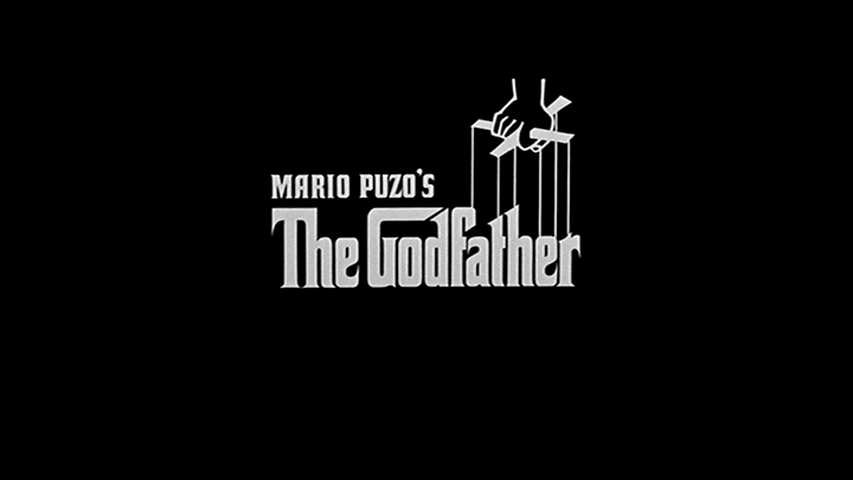
Title Logo of The Godfather
from The Godfather
©1972 Paramount Pictures.
The first reason I can think of is the thematic Italian culture. The main characters in the film are a mafia family with roots in Sicily. They are Americans, but they live in a Sicilian-style family culture. In Sicily, there is a traditional art of puppetry. The hand on the logo could symbolize this. In other words, it suggests that they have their roots in Sicily and are keeping their family culture alive.
Video of Opera dei Pupi, a traditional Sicilian puppet show.
This puppet show has been registered as an intangible cultural heritage.
Second, it could represent their way of life and values. They value gaining great power in the underworld and becoming the “manipulators” of society and the people. In the end, they hope to enter the “front” world of politics.
However, they are at the mercy of a harsh fate as they lose family members in a war or fight among relatives. In other words, their fate is controlled by God. It can be interpreted that the hand is drawn on the logo as a symbol that they are being manipulated by God, as they try to control society and the people.
Let’s put it into an “equation.”
God : Family ≒ Family : Society
They are both the “manipulator” and the “manipulated.” The logo symbolically represents the analogy between these three terms with a picture of “puppet hand” and coincidentally suggests their roots. In that sense, it is quite a sophisticated expression.
We can point out the close relationship between a masterpiece of cinema and the analogy between the three terms.
◆ The golden ratio
The golden ratio is the proportion of a line segment of a certain length that, when divided into two parts, looks like this:
Length of the whole ( W ) : length of the large part ( L )
= length of the large part ( L ) : length of the small part ( S )
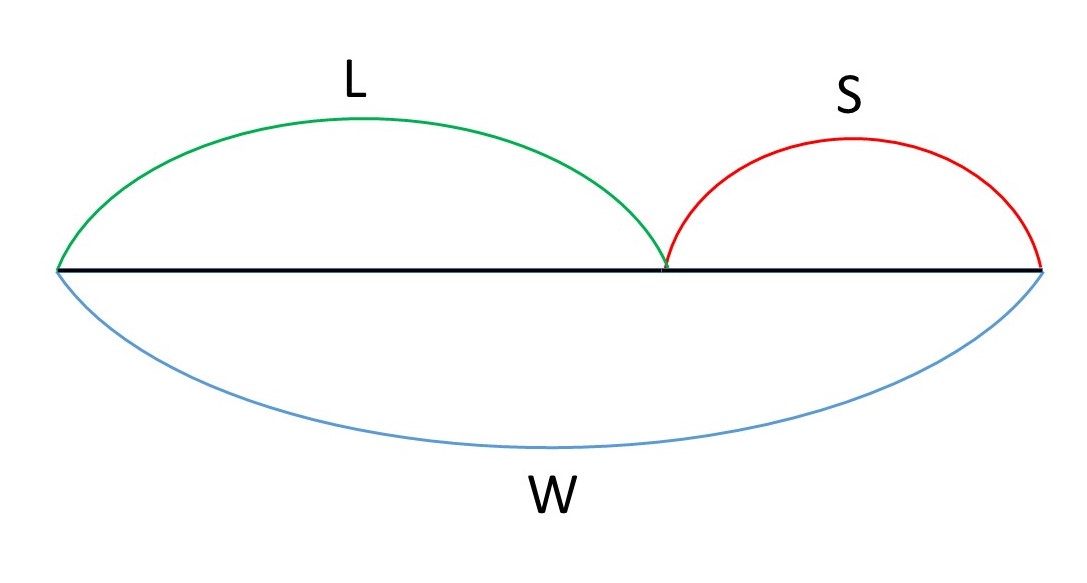
Looking at this definition, we notice that the “large part,” the right term on the left side of the equation, is the left term on the right side. This is the same as the analogy between the three terms that I have pointed out so far.
Each of the ratios is exactly a relationship. Proportions are connected by the relationship that two ratios are “equal.” Analogy, on the other hand, merely says that the two relationships are similar. The two are distinctly different in this respect. But both are talking about the same thing: the relationship between relationships.
There is a theory that the golden ratio is an abstraction, and that its approximate value is “1:1,618”, and that it is beautiful if it is that ratio. However, I think this is completely missing the point of the golden ratio because this is just a relationship. “1:1,618” is only a ratio or ‘something like a ratio.’ However, as mentioned earlier, the golden ratio is a ‘relationship between relationships,’ or a ‘meta-relationship.’
In the style of Gregory Bateson, relationship and meta-relationship have different “logical types.” If the logical type is other, what we are talking about is entirely different. If you mix up different logical types, the worst paradox will occur. “Russell’s paradox” occurred when Bertrand Russell mixed up “sets” and “sets of sets.” In fact, Russell also introduced the paradox of relationships. Therefore, it is necessary to make a clear distinction between relationship and meta-relationship with different logical types.
It is not difficult to say, but the meta-relationship should be more delicate than the relationship in layman’s terms. If something in the golden ratio is beautiful, it must have something to do with its delicacy. It is beautiful because we feel its delicacy somewhere in our mind, not because we feel the mere ratio of “1:1,618.”
The golden ratio has also been linked to the formation of the natural world, both animate and inanimate. The concept of “fractal,” which was popular for a while, also seems to have something in common with the analogy between the three terms.
I conclude my explanation of analogy using Kobo-chan as an example. I plan to continue with an explanation of ‘induction.’
◯Bibliography
Bateson. G and Bateson. M. C. Angels Fear: Towards an Epistemology of the Sacred New York: Macmillan, 1987.
Amazon.com
※The content, text and images are prohibited to reproduce, quote or use in any way other than for correct quotation.


